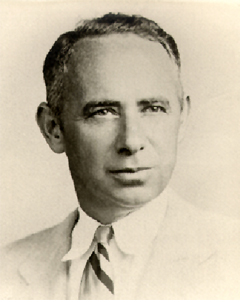Mr. Samuel Feltman
 Mr. Samuel Feltman was born at Long
Branch, New Jersey in 1899 and entered active duty at Sandy Hook Proving Ground in February 1918. He was assigned
to duty at Aberdeen Proving Ground where he was in charge of a gunnery section for 10 years until he went to the
Office Chief of Ordnance, as assistant to the chief engineer, Ammunition Division, Technical Staff.
Mr. Samuel Feltman was born at Long
Branch, New Jersey in 1899 and entered active duty at Sandy Hook Proving Ground in February 1918. He was assigned
to duty at Aberdeen Proving Ground where he was in charge of a gunnery section for 10 years until he went to the
Office Chief of Ordnance, as assistant to the chief engineer, Ammunition Division, Technical Staff.
In 1941, he became Chief of the Ballistics Section of the newly formed Army Technical Division. He proposed the ballistic characteristics of such weapons as the 90mm and 120mm antiaircraft guns, the 8 inch gun, the 240mm howitzer, and many other weapons. Additionally, the success of the design and development of high-speed electronic computers in which the Ordnance Corps pioneered and from which the ENIAC and EDVAC have resulted, is attributable in great measure to his foresight and active support. He also contributed immeasurably to the conception and successful development of the hypersonic wind tunnel which has air flow speeds ten times the velocity of sound.
In 1951, he was Associate Chief of the Research and Materials Branch and Chief of the Ballistic Section of the Ordnance Research and Development Division. In this capacity, he exercised technical and administrative control over the programs of research in interior, exterior, and terminal ballistics; coordinated the activities of research in metals, plastics, glass, fibers, fuels, lubricants, and atomic application to Army use; and served as consultant to all divisions of the Ordnance Corps, outside agencies, and field installations. He played a significant role in the establishment of a weapons system laboratory at the Ballistics Research Laboratory which later became the basis for the present Army Materiel Systems Analysis Agency, and a focal point for the development of theoretical concepts such as lethality, vulnerability, and cost effectiveness analysis. Mr. Feltman died on September 6, 1951.